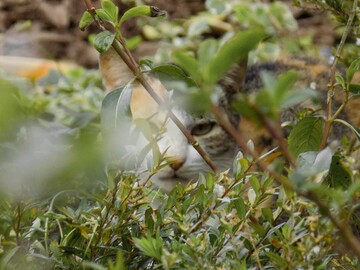How do scientists make observations?

Observing hidden animals in their natural habitat.

Observing hidden animals in their natural habitat.
Observing the world around us is an important part of being a scientist. Scientists use their eyes, ears, nose, and even special tools like microscopes to make observations. Observations are like detective clues that help scientists understand the mysteries of nature.
Let's take an example, a beautiful butterfly fluttering in your garden. When scientists observe butterflies, they carefully watch their colors, patterns, and how they move from flower to flower. They might also listen to the sounds the butterfly makes, like the soft fluttering of its wings.
Sometimes, scientists can't see everything they want to study, like tiny insects hiding in the soil. That's when they use tools like magnifying glasses or microscopes. These tools make the tiny things look bigger, so scientists can observe them better.
Scientists also use their sense of touch. Imagine they want to know if water is hot or cold. They touch it and feel its temperature. Or if they want to know if a leaf is rough or smooth, they gently run their fingers over its surface.
When scientists make observations, they write down everything they see, hear, smell, and feel. These notes are like a story of what they discovered. By writing things down, they can share their findings with other scientists.
Observing is like being a detective, exploring the world around us, and trying to understand its secrets. It's a superpower that every scientist uses to unlock the wonders of nature.
Now you know how scientists make observations! Just like you observe your surroundings, scientists use their senses and tools to learn more about the incredible world we live in. So, keep your eyes open, and who knows, maybe you'll become a brilliant scientist one day too!
How do scientists communicate their findings?
Scientists communicate their findings by writing or speaking about what they discovered. They share their observations, experiments, and conclusions with other scientists around the world. One way they communicate is by writing scientific papers, which are like stories that explain their research. These papers are published in special science journals so that other scientists can read and learn from them. Scientists can also present their findings at conferences, where they give talks or show posters with their research. By sharing their findings, scientists can work together, build on each other's work, and keep discovering new things!
How do scientists study cells?
Scientists study cells by using special tools and techniques. They start by taking samples, like a small piece of tissue or a drop of blood, and put it under a microscope. They use microscopes to make cells look bigger so they can see all their tiny parts. It's like using a magnifying glass to see details on a small object. Scientists observe the cells and take notes about what they see, like the shape, size, and what they are doing. They can even use special stains or dyes to make different parts of the cell easier to see. By studying cells, scientists can learn more about how living things work and find new ways to keep us healthy.

Observing hidden animals in their natural habitat.